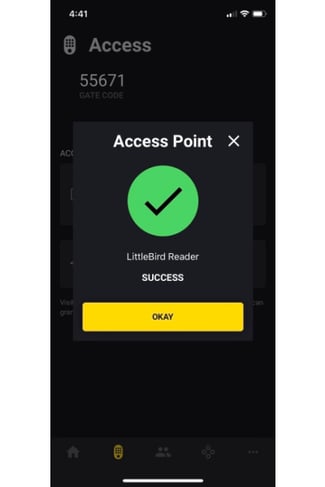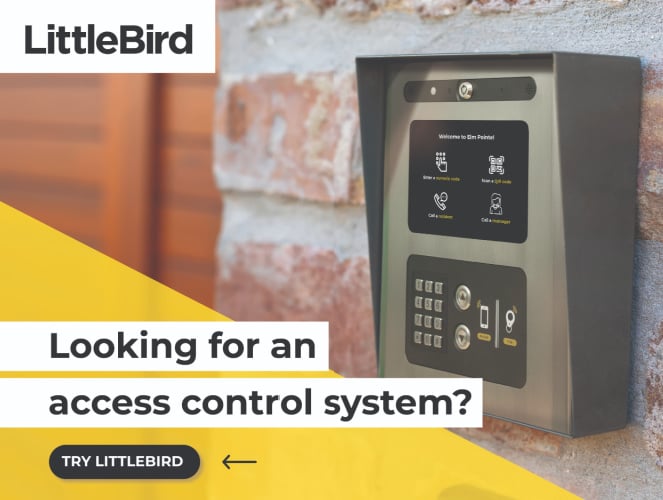Best Keyless Entry System for Multifamily Communities
As more people seek the convenience and security of keyless entry systems for their homes, it's no surprise that multifamily communities are also embracing this trend. Keyless entry systems offer a number of benefits for apartment buildings, condos, and other multifamily communities, from eliminating the need for physical keys to enhancing security and access control.
But with so many options on the market, it can be overwhelming to choose the best keyless entry system for your community.
In this article, we’ll cover…
- What are keyless entry systems for apartments?
- How does a keyless entry system work?
- Benefits of a keyless entry system
- Choosing the best keyless entry system for multifamily buildings
What are keyless entry systems for apartments?
Keyless entry systems are a popular and innovative solution for multifamily apartment communities looking to enhance their security and access control measures. As the name suggests, keyless entry systems eliminate the need for traditional physical keys, instead relying on electronic credentials to grant access to residents, staff, and approved visitors.
Keyless door entry systems typically use a code, a card, a fob or a smartphone to authenticate and grant access to the user. This eliminates the need for keys that can be lost, stolen, or duplicated, and also provides greater flexibility in managing access rights.
What is the purpose of a keyless door entry?
According to a survey conducted by Schlage, a leading manufacturer of keyless entry systems, 56% of Americans have lost or misplaced the key to their home.
This can be inconvenient for both residents and building managers, as it may require the replacement of locks or keys, and can also pose a security risk if the lost key falls into the wrong hands. Keyless entry systems can eliminate these concerns by providing an alternative means of access that is not dependent on physical keys.
In a keyless entry system, each authorized user is given a unique electronic credential, such as a key fob or access code, which they use to gain entry to the building and their individual apartment unit. These credentials can be easily programmed and managed by property managers, allowing for quick and efficient addition, removal, or modification of user access rights as needed. Additionally, keyless entry systems can provide valuable data and insights for property managers, such as access logs and real-time alerts for unauthorized entry attempts.
How does a keyless entry system work?
A keyless entry system uses electronic authentication methods instead of physical keys to grant access to a building or room. Here are the basic steps involved in how a keyless entry system works:
- Authentication: A user attempts to gain access by presenting a credential such as a code, card, fob, or smartphone to the reader of the keyless entry system.
- Verification: The system verifies the user's credentials to determine if they are authorized to enter the building or room.
- Access Granting: If the credential is valid and the user is authorized, the system unlocks the door or grants access to the user.
- Record keeping: The system may keep a record of the user's access, including the time and date of entry, and other relevant information.

Types of keyless entry systems for multifamily buildings
There are various types of keyless entry systems available, each using different authentication methods. Some common types include:
- Keypad entry systems: These require users to enter a PIN code to gain access.
- Smart card systems: While smart card systems still technically require a physical credential for residents to swipe or tap a card with a built-in chip to gain access – they are easier to replace if stolen or lost.
- Biometric systems: These require users to provide a physical characteristic like a fingerprint or facial recognition to gain access.
- Mobile app-based systems: Residents are asked to install a mobile app on their smartphone and use it to authenticate and gain access. This method has been increasingly popular – especially since 75% of Americans have felt uncertain about whether or not they have locked their door after leaving home. With a mobile app like LittleBird’s, residents can gain peace of mind and check on their homes from anywhere and at any time.
- Video intercom systems: Video intercom systems provide both audio and video communication between the resident or visitor and someone inside the building or room, and can include additional features like remote access control and recording.
Want an estimate for your project?
How much do keyless entry systems cost?
The cost of a keyless entry system for a multifamily building can vary widely depending on several factors, including the size of the building, the number of units, and the specific features and capabilities of the system. Generally, the cost of a keyless entry system can range from a few hundred dollars to several thousand dollars, with larger and more complex systems being more expensive.
Here are some of the main costs to consider for a keyless entry system for multifamily communities:
- Hardware and installation: This includes the cost of the electronic locks, access control panels, key fobs, mobile apps, and other hardware components, as well as the cost of professional installation and setup.
- Subscription fees: Some keyless entry systems may require ongoing subscription fees for system maintenance, software updates, technical support, and other services.
- Integration with existing systems: If the keyless entry system needs to integrate with other building management systems, such as security cameras, intercoms, or building automation systems, there may be additional costs involved.
- Customization and upgrades: Depending on the specific needs and requirements of the building, there may be additional costs for customizing the system or adding new features, such as biometric authentication or visitor management.
- Training and support: It's important to consider the costs of training building staff and residents on how to use the keyless entry system, as well as ongoing technical support and troubleshooting.
It's important to carefully evaluate the costs and benefits of different keyless entry systems and to choose a system that fits your budget and meets your specific needs and requirements. It may be helpful to consult with a professional security or access control company to get a more accurate estimate of the costs involved.

Benefits of keyless entry systems for apartments
Keyless entry systems are an innovative and cost-effective solution that can provide numerous benefits for both property managers and residents. Below are just a few of the key advantages:
Increased Security
Keyless entry systems eliminate the need for traditional physical keys and key-sharing workarounds like leaving it under the mat or unauthorized key copying. These methods can lead to resident keys getting lost or stolen, potentially granting unauthorized individuals access to the building and individual units. With keyless entry systems, each authorized user is given a unique electronic credential, such as a key fob or access code, which can be easily programmed and managed by property managers. This enhances overall building security and provides peace of mind for residents.
Convenience and Flexibility
Residents no longer have to worry about carrying around physical keys or fumbling with locks, and property managers can easily grant temporary access to approved visitors or contractors. Additionally, keyless entry systems can be integrated with other security measures, such as surveillance cameras and intercom systems, to provide a comprehensive security solution for multifamily apartment communities.
Cost Savings
Keyless entry systems can provide significant cost savings over traditional physical key systems. With traditional keys, property managers must often pay for rekeying services when keys are lost or stolen, or when residents move out. With keyless entry systems, lost or stolen credentials can be easily deactivated, preventing unauthorized access and eliminating the need for costly rekeying services.
Increased ROI
By implementing a keyless entry system, real estate developers can enhance the appeal and functionality of their properties, potentially increasing occupancy rates and rental income. Additionally, the cost savings associated with keyless entry systems can provide a positive return on investment over time.
Choosing the best keyless entry system for apartments
As the demand for smart technology in multifamily communities continues to grow, there are a variety of keyless entry system providers to choose from. However, LittleBird stands out as a unique and compelling alternative to other providers like Kisi, Latch, Brivo, Salto, August, Schlage, Yale, Allegion, HID Global, and Openpath.
![]()
So what makes LittleBird different from other keyless entry systems?
LittleBird differs from other keyless entry systems for apartments in several ways.
- Fully-integrated platform with smart home automation and resident engagement features. LittleBird offers a fully-integrated platform that includes not only keyless entry, but also smart home automation and resident engagement features. This means that residents can access a wide range of features through a single app, which can enhance the overall resident experience.
- Customizable and secure access control system. LittleBird's Smart Access product offers a range of access readers that work with both fobs and smartphone credentials, as well as a video intercom system, visitor management, and guest management. This allows for a more customizable and secure access control system.
- Vacant unit optimization. LittleBird's Smart Home product allows properties to automatically manage vacant units by turning on and off lights, setting the smart thermostat, and resetting lock codes on the smart lock, which can help reduce energy consumption and costs.
In summary…
- Keyless entry systems for multifamily communities are becoming increasingly popular due to their convenience, security, and access control benefits.
- Keyless entry systems use electronic authentication methods instead of physical keys, with various types available such as keypad entry systems, smart card systems, biometric systems, mobile app-based systems, and video intercom systems.
- Costs for keyless entry systems can vary widely depending on factors such as building size, number of units, hardware and installation, subscription fees, integration with existing systems, customization and upgrades, and training and support. It's important to carefully evaluate costs and benefits when choosing a system.
- LittleBird offers a secure, convenient, and cost-effective keyless access control solution for multifamily communities, enabling residents to enter their buildings and individual units using their smartphones.
Have a suggestion for our next blog post? 🐥
Chat with us on social media and don't forget to follow us to get the latest LittleBird updates.
-1.png?width=5935&height=1114&name=NEW%20LU%20%E2%80%93%20Long%20Logo%20%E2%80%93%20Dark%20(1)-1.png)
Comments